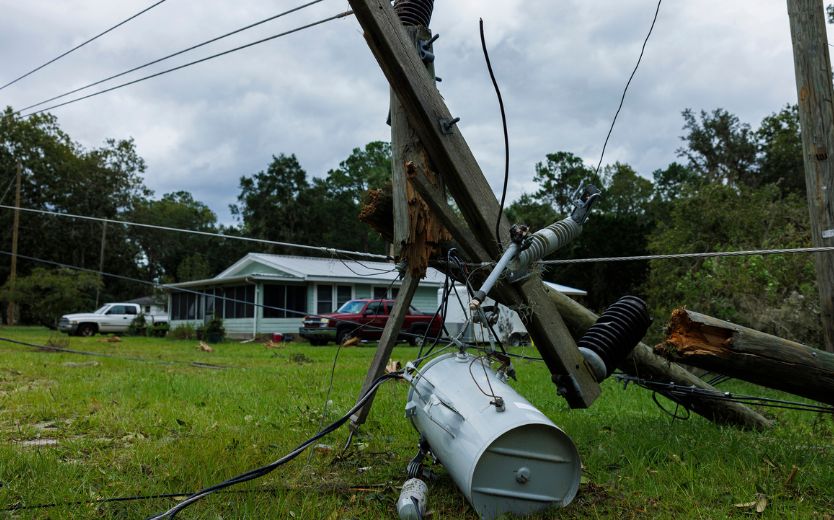What are Public Safety Power Shutoffs?
Public Safety Power Shutoffs occur when utilities proactively cut power to certain electrical circuits during high fire conditions to lower the risk of their equipment igniting a wildfire.
When was the first PSPS?
Also known as PSPS, the idea for public safety power shutoffs originated in California in 2008 when the utility company San Diego Gas & Electric (SDG&E) asked the California Public Utility Commission (CPUC) for permission to conduct this fire-prevention shut-off. Their request was not granted at that time, however, in 2012 the CPUC ruled that electric utilities could conduct PSPS events to prevent electrical equipment from sparking wildfires, especially during dry, windy weather. In 2018, the CPUC extended the PSPS ruling, allowing all investor-owned utilities in California to implement PSPS events, along with establishing some requirements for notification and reporting them.

Why do PSPS events happen?
Utilities are required to ensure clearance between energized power lines and foliage that might make contact with the lines. When trees or branches hit power lines, either the branch can cause a short circuit between two lines, or the branch can push lines together to cause a short circuit directly between the lines. In either case, a short circuit can cause branches to catch fire, or cause sparks or molten metal to drop on and ignite surrounding bushes or grass. Another way tree strikes can occur is when power lines sag into trees. This can happen when lines are overloaded, causing them to overheat, stretch, and expand. PSPS events de-energize electrical equipment during high fire and wind conditions to lower the risk of starting fires. In California, certain utilities failed to conduct the maintenance required to reduce the risks of electrical equipment resulting in historic wildfires and widespread PSPS events.
Where are PSPS events happening?
While PSPS events began in California, climate change is increasing the frequency and intensity of extreme weather across the U. S., leading more utilities to adopt PSPS events. Examples of this shift include:
- Oregon utilities have implemented PSPS events and energy regulators adopted PSPS guidelines in May 2022
- A Hawaiian utility, which announced its new PSPS program in July 2024
- An Idaho utility, which implemented PSPS in the Treasure Valley in July 2024
- A Colorado utility implemented a PSPS event in Boulder in April 2024

How long is a PSPS?
PSE Healthy Energy has conducted analysis on PSPS shutoffs in California, which has the most publicly-available data given their history in the state. In California, the average duration is almost two days, with some outages extending longer than six days. In general, the duration of a PSPS outage is driven by two factors:
- The duration of the weather event triggering the need to de-energize.
- The amount of time it takes the utility to determine the event is over and inspect the lines to ensure they can be safely re-energized.
How do PSPS events affect individuals?
Any extended power outage has the potential to result in disruptions to individual productivity, economic hardships, and risks to public health and safety. For example, extended power outages can result in a range of impacts, including food spoilage, missed work or school, and the inability to charge cell phones and computers. For individuals who depend on electrically-powered medical, mobility, or other essential devices, loss of electricity can be life threatening.
Learn more about PSPS
If you are experiencing a power outage or have questions about your local utility’s power outage policies, we recommend contacting your utility directly. To access research on the trends and impacts of public safety power outages from PSE Healthy Energy scientists, explore our related research below.
Our Practice Areas
Explore our work by topic.
@PhySciEng
Stay informed!
Join our email list to receive updates
on PSE's work and news.




